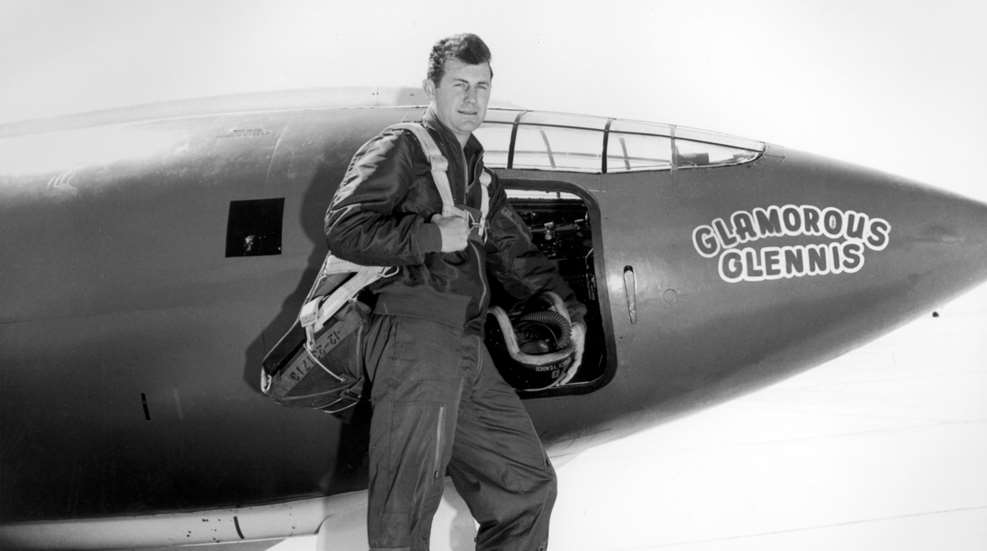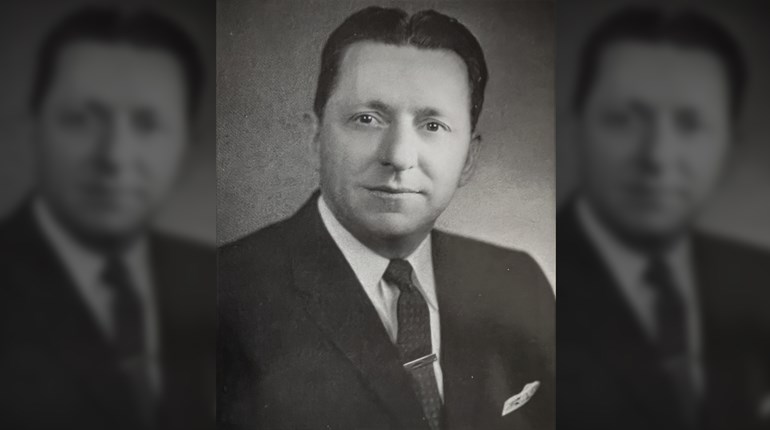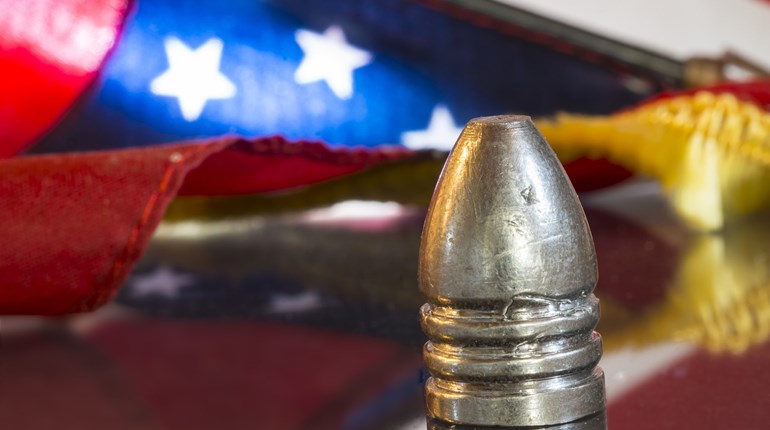
The dawn of the age of aviation arrived at exactly 10:35 a.m. on December 17, 1903, when a pair of brothers from Ohio flew their Wright Flyer at Kitty Hawk, North Carolina, a distance of 120 feet at 7 miles per hour.
Just 44 years later, a young pilot from West Virginia would strap himself into the cramped cockpit of a rocket-propelled airplane—named for his wife, Glamorous Glennis—and fly it over the Mojave Desert in California at 700 miles per hour, breaking the sound barrier. It was a signal flying feat he would be celebrated for the remainder of his long life. Only in his early twenties at the time, that courageous test pilot was Chuck Yeager.
Prior to Yeager’s historic flight, he was one of hundreds of young U.S. Army Air Forces flyboys dogfighting to stay alive in the deadly skies over Europe during World War II.
“I can’t believe how fast luck changes in war,” Yeager remembered. “Just the day before, I had landed back in England after scoring my first kill over Berlin. I spotted a Messerschmitt Me-109, dove on him, and blew him to pieces.”
But on his eighth combat mission, Yeager’s P-51 Mustang was hit and fatally crippled by the 20mm cannons of a German Focke-Wulf 190. Injured, he bailed out and parachuted to earth, but not to safety. Yeager landed in occupied France, a country swarming with patrols of German soldiers. Eluding capture for several days by hiding deep in a forest, he then made contact with members of the French Resistance. They, in turn, spirited him across the snowy Pyrenees Mountains to Spain, from where he eventually returned to England and his flight squadron.
The military procedure for such pilots was to immediately send them home to the States, essentially ending their combat flying careers. The reasoning was that the pilots now knew too much about the French Resistance, and if captured might inadvertently reveal that knowledge to the enemy under interrogation or torture.
Most pilots would welcome an assignment stateside after surviving a harrowing experience such as Yeager had, but he was having none of it. Yeager lobbied his commanders hard to remain in England and continue flying combat missions, taking his case all the way up the chain of command to General Dwight D. Eisenhower.
Ike eventually relented, saying that Yeager could stay and continue flying. And Yeager didn’t disappoint, becoming an “ace in a day” on October 12, 1944, shooting down five enemy aircraft during one mission! His total WWII combat record would eventually tally 11.5 kills during 61 missions (the half-kill came from an incident in which he and another pilot teamed to shoot down an enemy plane).
Chuck Yeager had at least three natural gifts that helped him become one of America’s greatest fighter pilots of all time: tremendous eyesight, excellent hand-eye coordination and an innate mechanical ability—he understood airplanes and the many onboard systems that kept them flying. It was his mechanical knowledge that often allowed him to survive situations that would have killed lesser pilots. “The secret to my success is that I always managed to live to fly another day,” said Yeager.
Fellow fighter jock Clarence E. “Bud” Anderson said of Yeager’s eyesight and aerial marksmanship, “You first have to see the enemy [airplanes] to get them … and he’d see them coming from 50 miles away—the dimmest specks—minutes before anyone else. Chuck never missed when he fired his guns. If the enemy was gettable, he got them.”
Luck, as well, plays a role in a fighter pilot’s survival. During WWII, air combat was a 50-50 proposition, either kill or be killed. Yeager crash-landed several airplanes both during and after the war. And by the way, pilots never said the word “crash,” even today, thinking it might jinx them, their plane or their mission.
“Crash is not a word pilots ever use,” said Yeager. “I don’t really know why, but the word is avoided in describing what happens when several tons of metal plows itself and its pilot into the ground. Instead, we might say, ‘He augered in.’ Or, ‘He bought the farm.’”
One particular crash-landing of Yeager’s had a humorous outcome, occurring after the war while he was attending test-pilot school at Wright Field in Ohio. He was flying a two-seat, T-6 prop trainer at 5,000 feet. An instructor was in the copilot seat, but he had relatively few flying hours compared to Yeager.
“Suddenly, the master rod blew apart in the engine, and the ship began to vibrate as if it would fall apart,” Yeager said. “I cut back on the power and began looking down to see where I could make an emergency landing.”
There were two plowed farm fields below, but Yeager instinctively knew he couldn’t reach either one, so with his landing gear still up he bellied-in between the fields. Unfortunately, his plane touched down in a direct line with a farmhouse and its outbuildings. The plane skidded through the chicken coop in a clatter of boards and cloud of feathers. The right wing hit the smokehouse, the tail hitting the front of the farmhouse porch.
“We came to rest alongside the farmwife’s kitchen window,” said Yeager. “She was at the sink, looking out, and I was looking her right in the eye through a swirl of dust and feathers.” Not one to fluster easily in an emergency, Yeager calmly popped open the plane’s canopy, smiled and said, “Morning, Ma’am; mind if I use your telephone?”
Chuck Yeager would not only press on to become a certified test pilot, he also flew future combat missions over both Korea and Vietnam. Throughout his flying career, he piloted more than 360 different types of aircraft and earned the following awards:
- Air Force Distinguished Service Medal
- Army Distinguished Service Medal
- Silver Star (2)
- Legion of Merit (2)
- Distinguished Flying Cross (3)
- Bronze Star
- Purple Heart
Yeager was aggressive in combat, yet also knew when not to press his luck. Thousands of hours in the air had taught him when to attack and when to back off. In a word, experience, often a split-second decision, made the difference.
“I have flown in just about everything, with all kinds of pilots in all parts of the world … and there wasn’t a dime’s worth of difference between any of them except for one unchanging, certain fact: the best, most skillful pilot had the most experience. The more experienced, the better he is. Or, for that matter, she is.”
Despite the worldwide notoriety he received as the ultimate test pilot following his 1947 breaking of the sound barrier, Chuck Yeager remained a fighter pilot at heart. “For a fighter pilot, combat is the ultimate flying experience,” he said. “That’s why I loved to dogfight. It was a clean contest of skill, stamina and courage, one on one. You fought wide open, full throttle.”
Chuck Yeager lived life the same way he flew airplanes, full throttle. Never one to sit still for long, he was a lifelong outdoorsman who loved to hunt and fish, but flying always remained his true passion. He died just three years ago in 2020, at age 97, passing quietly in a Los Angeles hospital. Fittingly, he died on December 7, Pearl Harbor Remembrance Day, the “day of infamy” in 1941 that would ultimately draw the United States of America into World War II—and require the flying talents of Chuck Yeager.
If you’d like to read more about General Chuck Yeager and his many flying adventures, the 1985 book Yeager by Leo Janos is highly recommended.





































